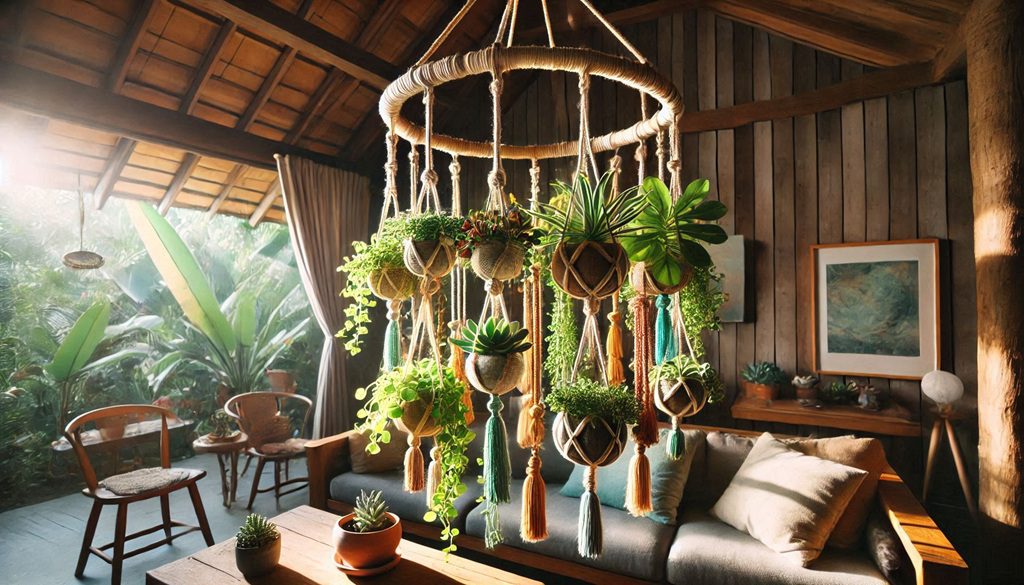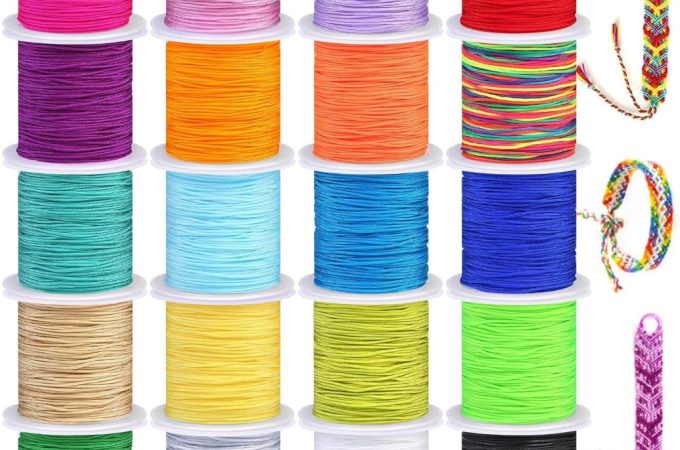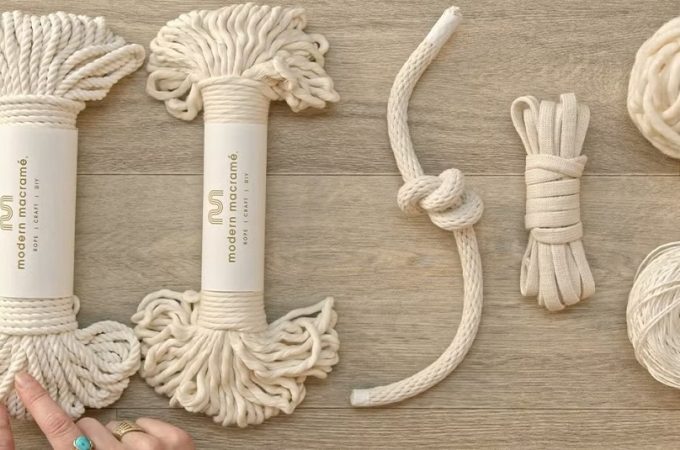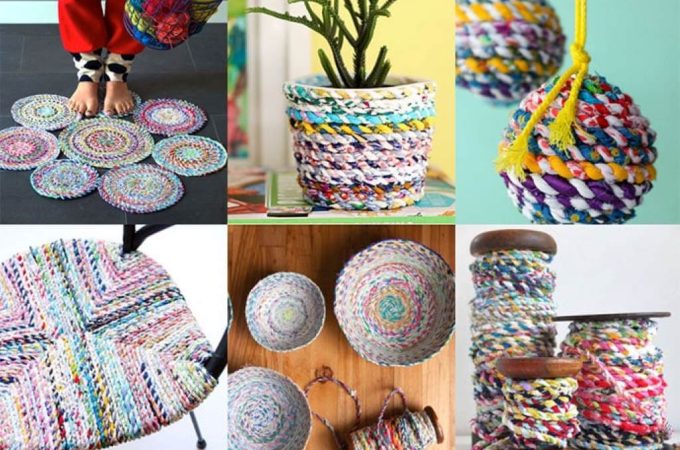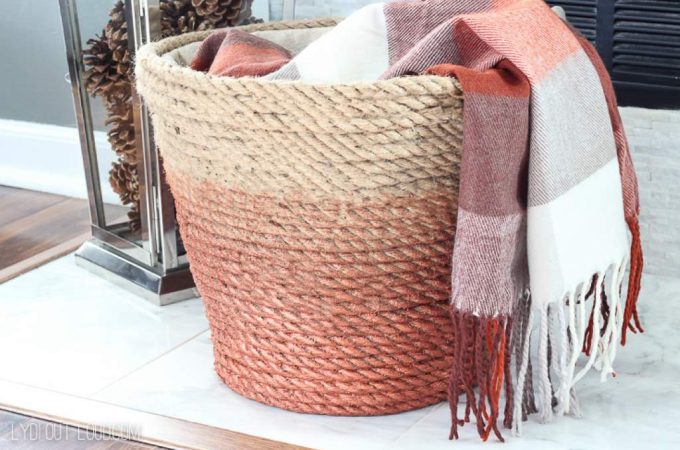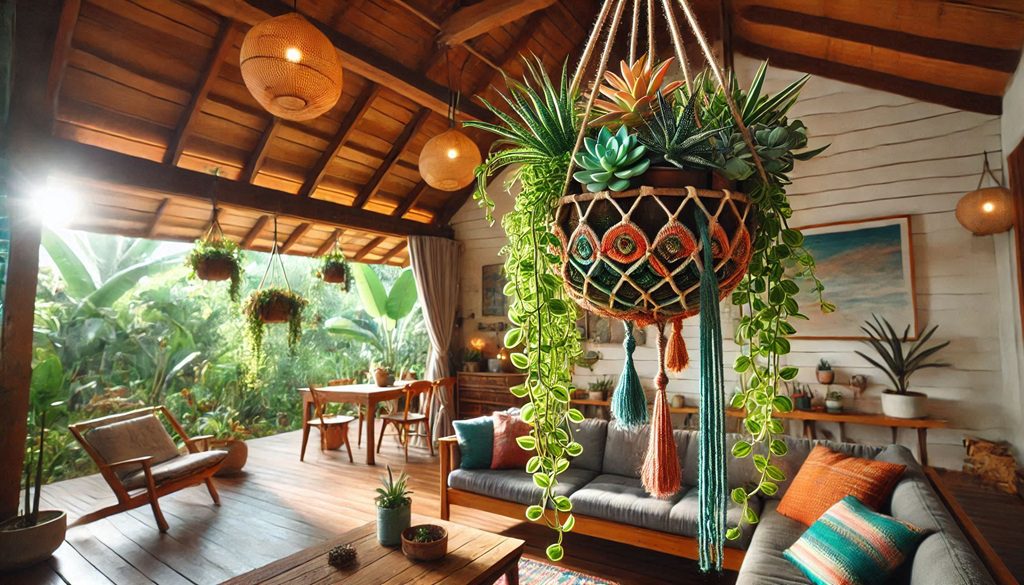
Weaving Wonder: A Comprehensive Guide to DIY Plant Hanger Rope
The humble houseplant has undergone a renaissance. No longer relegated to dusty corners, they’re now celebrated centerpieces, adding life and vibrancy to our homes. But why stop at the pot? Elevate your greenery, literally, with a handcrafted macrame plant hanger. This guide dives deep into the art of DIY plant hanger rope, empowering you to create stunning, personalized displays that perfectly complement your indoor jungle.
Contents at a Glance
ToggleWhy DIY? The Joys of Handcrafted Plant Hangers
In a world of mass production, there’s a certain magic in crafting something with your own hands.
DIY plant hangers offer:
- Uniqueness: Escape the ordinary! Choose your colors, patterns, and materials to create a hanger that truly reflects your style.
- Sustainability: Repurpose old textiles or opt for eco-friendly materials like organic cotton or recycled fibers.
- Customization: Tailor the size and design to perfectly fit your pot and plant, ensuring a secure and stylish display.
- Mindfulness: The repetitive knotting involved in macrame is incredibly soothing, offering a mindful escape from daily stresses.
- Affordability: Creating your own plant hangers is often cheaper than buying pre-made ones, especially if you already have some basic supplies.
Gathering Your Gear: Essential Supplies for Plant Hanger Rope DIY
Before you embark on your macrame journey, ensure you have the following essentials:
- Rope: The star of the show! Popular choices include cotton, jute, and hemp. Each material offers a different texture and aesthetic. Consider the weight of your plant and pot when selecting your rope thickness.
- Scissors: Sharp scissors are crucial for clean cuts and preventing fraying.
- Measuring Tape: Accurate measurements are key for creating a balanced and symmetrical hanger.
- S-Hooks or Rings: These will be used to hang your finished creation. Choose a size and material that complements your hanger and can support the weight of your plant.
- Optional Extras: Beads, dowels, and tassels can add personality and flair to your design.
Knotting Know-How: Mastering Basic Macrame Techniques
Macrame magic lies in the knots! While countless variations exist, mastering these basic knots will lay a strong foundation for your plant hanger creations:
- Square Knot: The workhorse of macrame, used to create a variety of patterns and textures.
- Spiral Knot: Adds a beautiful twisted effect, perfect for creating intricate designs.
- Half Knot: The building block for many other knots, used to create diagonal lines and patterns.
- Lark’s Head Knot: Used to attach your cords to your ring or dowel, starting your project.
- Overhand Knot: A simple knot used to secure the ends of your cords and prevent unraveling.
Numerous online tutorials and books offer step-by-step instructions for these knots. Don’t be afraid to practice on scrap rope until you feel comfortable with each technique.
Project Inspiration: DIY Plant Hanger Rope Ideas
From minimalist chic to bohemian rhapsody, the possibilities are endless!
Here are a few ideas to spark your creativity:
- Classic Spiral Hanger: This timeless design features a series of spiral knots, creating a beautiful, cascading effect.
- Modern Geometric Hanger: Incorporate square knots and geometric patterns for a contemporary look.
- Boho Chic Hanger: Add beads, feathers, and tassels for a free-spirited, bohemian vibe.
- Multi-Tiered Hanger: Create a hanging garden with multiple levels to display several plants.
- Wall-Mounted Hanger: Instead of hanging from the ceiling, design a hanger that can be mounted on the wall for a unique display.
Choosing the Right Rope: A Material Guide
The type of rope you choose significantly impacts the look and feel of your plant hanger.
Here’s a breakdown of popular options:
- Cotton: Soft, versatile, and available in a rainbow of colors. Ideal for beginners due to its ease of use.
- Jute: A natural fiber with a rustic, earthy aesthetic. Strong and durable, perfect for larger plants.
- Hemp: Another eco-friendly choice known for its strength and durability. Offers a more textured look compared to cotton.
- Macrame Cord: Specifically designed for macrame, this cord is often a blend of cotton and synthetic fibers, offering excellent knotting properties.
Consider the weight of your plant, your desired aesthetic, and your budget when choosing your rope.
Beyond the Basics: Elevating Your Plant Hanger Game
Once you’ve mastered the fundamentals, explore these techniques to add extra flair to your creations:
- Dyeing: Transform plain rope into a custom color palette using natural or synthetic dyes.
- Beadwork: Incorporate beads of various sizes and materials for added texture and visual interest.
- Tassels: Create playful tassels to adorn the ends of your hanger.
- Plant Hanger Stands: Instead of hanging from the ceiling, consider using a plant hanger stand to display your creation.
Plant Hanger Rope Reviews: Finding the Perfect Cord
With a plethora of options available, choosing the right rope can feel overwhelming.
Here are some popular brands and products to consider:
- Ganxxet Macrame Cord: Known for its high quality and wide range of colors, this cord is a favorite among macrame enthusiasts.
- Review: “This cord is a dream to work with! It’s soft, and strong, and the colors are vibrant. My knots look amazing!” – Sarah M.
- Bobbiny Macrame Cord: Another popular choice, Bobbiny offers a variety of textures and thicknesses, including single-strand and 3-ply cords.
- Review: “I love the texture of this cord! It adds a beautiful, natural element to my plant hangers.” – Emily K.
- Natural Cotton Rope: Available at most craft stores, this affordable option is perfect for beginners.
- Review: “Great for practicing knots and experimenting with different designs. It’s also easy on the wallet!” – David L.
Remember to read reviews and compare prices before making your purchase.
Related: Elevate Your Garden: A Comprehensive Guide to DIY Hanging Basket Rope
FAQs: Addressing Your Plant Hanger Queries
Q: How much rope do I need for a plant hanger?
A: The amount of rope varies depending on the size and design of your hanger. As a general rule, it’s better to have too much than not enough. Start with at least 20 yards for a basic hanger and adjust accordingly.
Q: Can I wash my macrame plant hanger?
A: Yes, most plant hangers made from cotton or jute can be hand-washed with mild detergent. Avoid using the washing machine, as it can damage the knots and fibers.
Q: What type of plant pot is best for a hanging planter?
A: Lightweight pots made from plastic or ceramic are ideal for hanging planters. Ensure the pot has drainage holes to prevent overwatering.
Q: How do I prevent my plant hanger from swinging?
A: Hang your plant hanger from a stable hook or secure it to the ceiling using a sturdy anchor. You can also try adding weight to the bottom of the pot to increase stability.
Q: Where can I find free macrame plant hanger patterns?
A: Numerous websites and blogs offer free macrame patterns, including detailed instructions and diagrams. Pinterest and YouTube are also excellent resources for inspiration and tutorials.
Embrace the Craft: Creating Your Own Green Oasis
DIY plant hanger rope offers a world of creative possibilities. By mastering basic macrame techniques and exploring different materials, you can craft unique and stylish displays for your beloved plants. So gather your supplies, unleash your inner artist, and transform your home into a verdant paradise!

